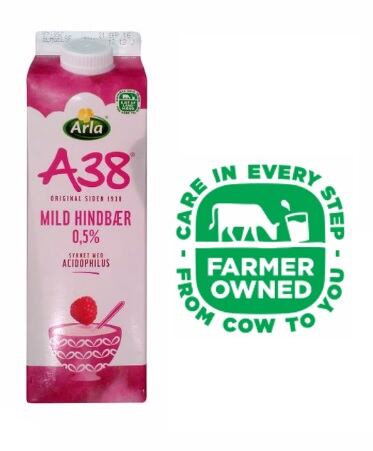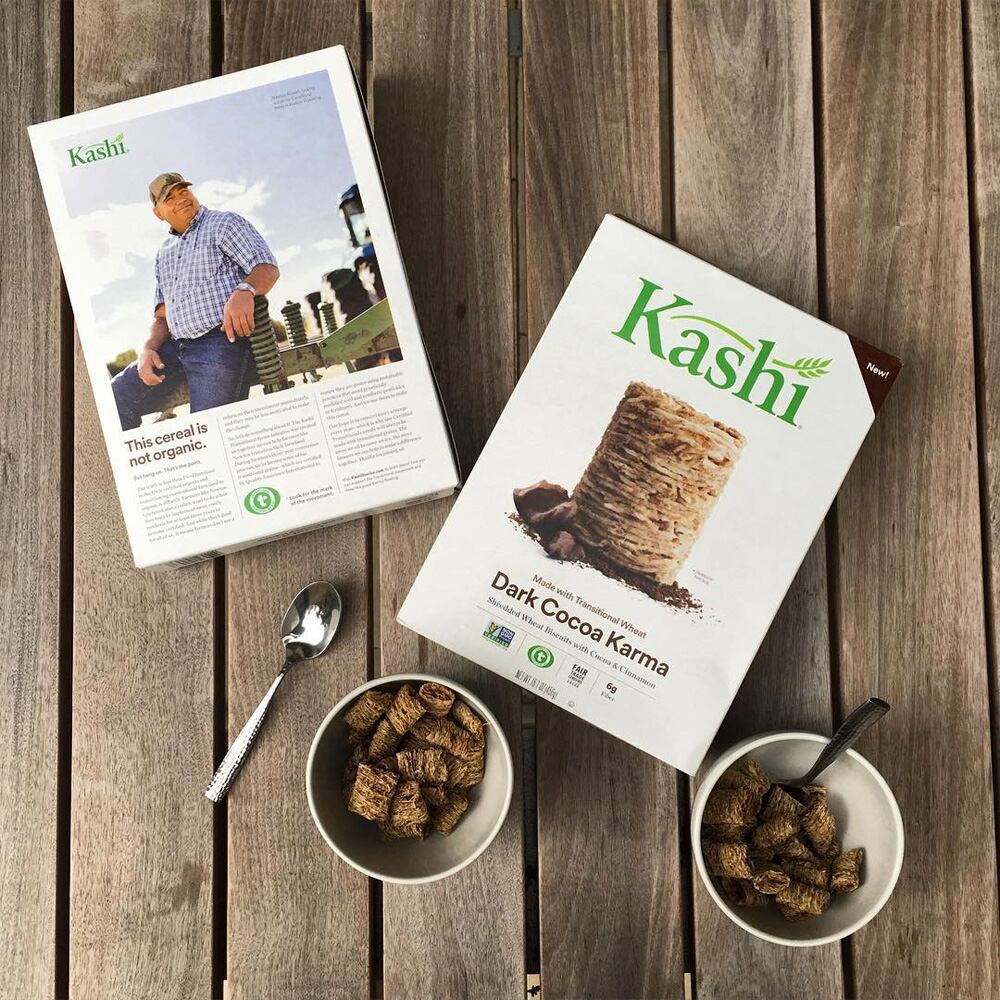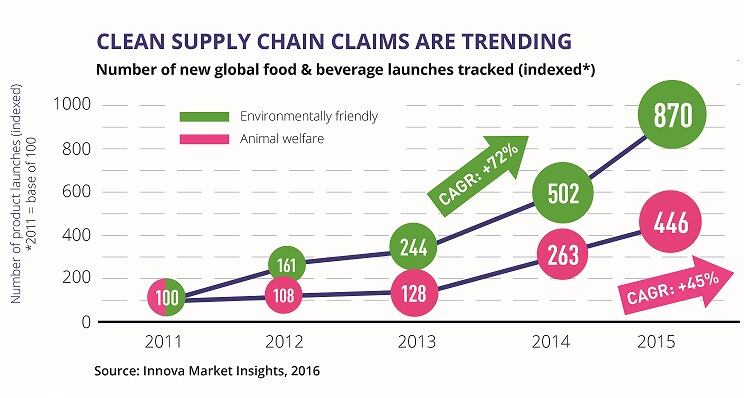“We’re seeing a lot more agriculture claims on products,” said Lu Ann Williams, director of innovation at Innova Market Insights, during a webinar hosted by Innova where she outlined the top ten trends for 2017.
Evidence of farm-referencing is most pronounced in the dairy sector. “There were a lot more dairy products with grass-fed claims. It doubled from 2014 to 2015,” she added. The whole farm-to-fork trend is still “very small,” Williams said, “but it’s growing really fast.”

Clean label is already the norm
The rise of ‘farm-to-fork’ claims are motivated greatly by brands’ needs to differentiate themselves in an age where clean label and organic is no longer niche.
Innova’s data revealed that there is continuous double digit growth for clean label related new product development around the world. Tracking the compound annual growth rate of new product launches with claims 'no additives/preservatives,' 'natural,' 'organic,' or 'GMO-free' in 2011-2015, there was an 18% increase in North America, and a whopping 37% increase in Latin America.
“Last year we talked a lot about ‘from clean to clear label,’ so it’s not just about clean label but also that added layer of transparency,” Williams said. “What’s happening is that now we’ve seen [clean label] spread even further back into the supply chain.”

Planting its roots so deep in the food industry means “clean label is not really a trend anymore, it’s the new rule of the game,” Williams said. She also observed that even though the claim ‘No Additives/Preservatives’ is still the most tracked claim, “it’s not a differentiator anymore, it’s more of a fact.”
Bigger brands, tell your story
Shorter ingredients lists, cleaner formulations, and exclaiming the product’s virtues in animal welfare and supporting local farmers are all more quantifiable ways brands have used to communicate 'natural,' a popular label claim controversial for its vagueness.
“Natural is really the ultimate aim, but we know that there’s a lot of issues around this. It lacks a clear definition but in some countries there is a definition, so that’s not really a label claim that’s easy to use,” Williams said.
Hence, when brands use their products as a platform for missions seen virtuous by consumers, such as supporting local farmers or treating source animals ethically, it resonates positively with consumers.
All food is grown somewhere...
According to Williams, farm claims are still a space dominated by small companies, and medium- to large-sized companies risk looking gimmicky when using these claims. “But that doesn’t mean that you’re locked out of this. This is just an example and it still can be inspirational. There’s other things you can talk about—that’s where the transparency comes in,” Williams said.
“It’s not like there’s a checklist and you have to follow specific stories. Find your story and talk about it,” she added. Kashi is an example of a big brand that revamped its packaging to center on the people behind the brand, featuring editorial-like profiles of Kashi’s farmers and employees on the back of its cereal boxes.
“You have to figure out what is your story because all food is grown somewhere,” Williams said.
Mission-Driven on the rise
According to data from Innova Market Insights, there's been a 72% increase of environment-related claims from 2011-2015, and a 45% increase of animal welfare claims in the same time period.

